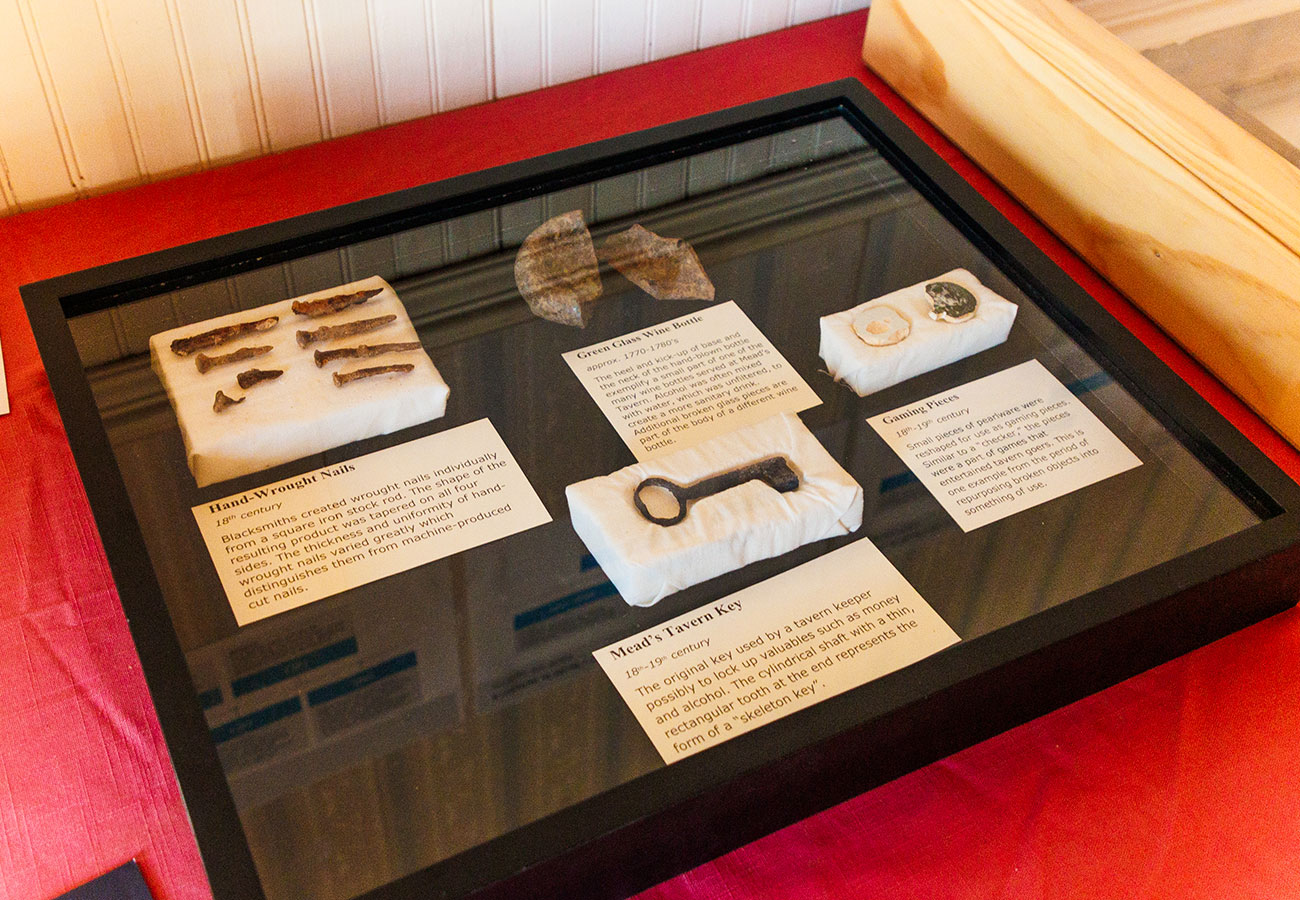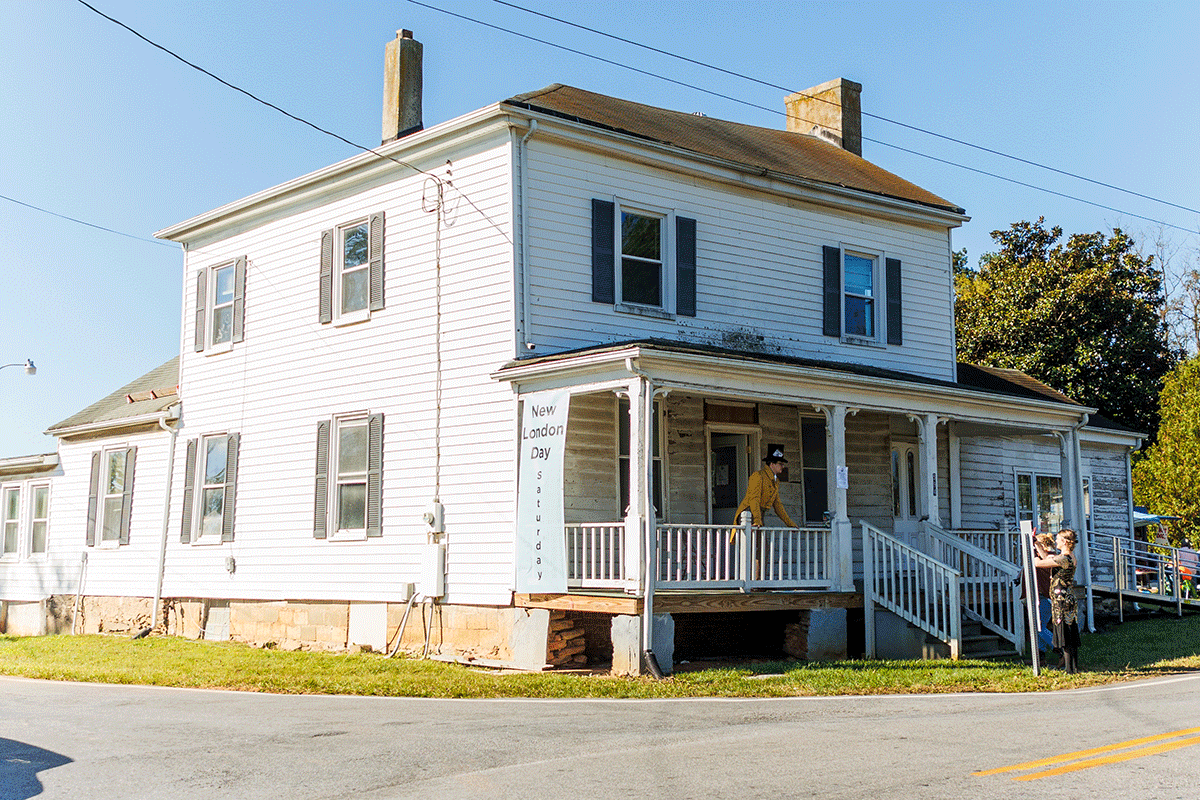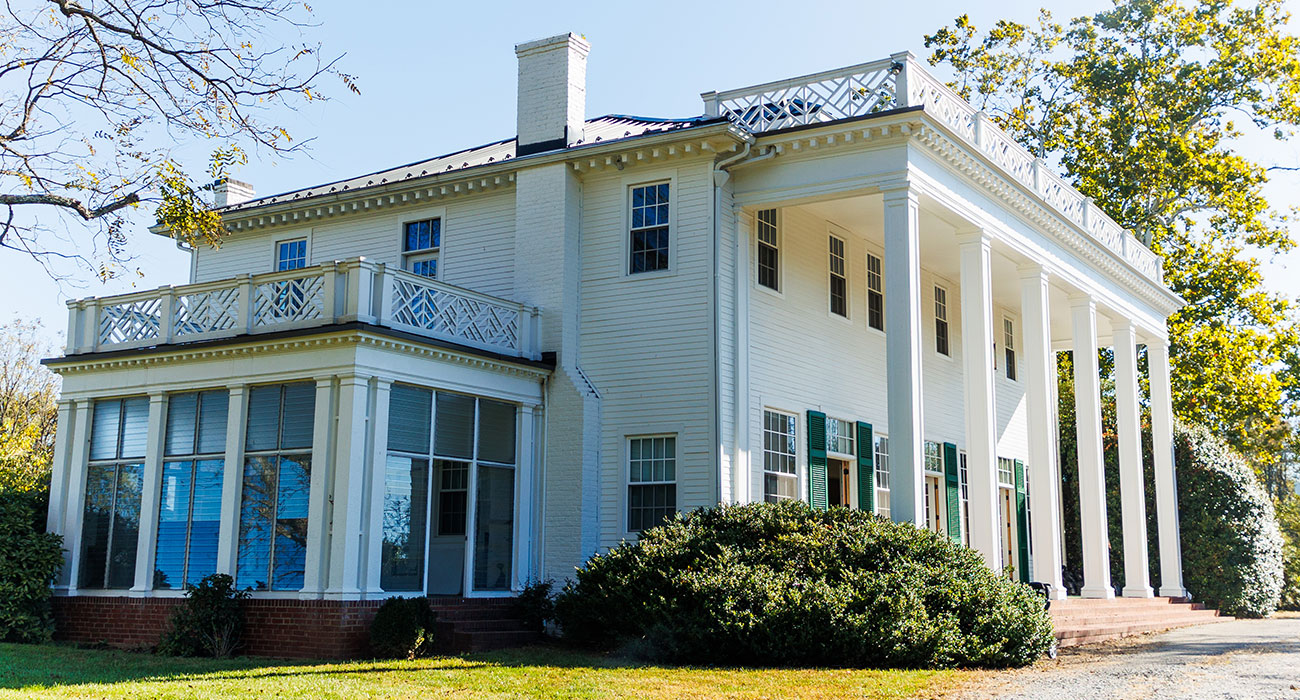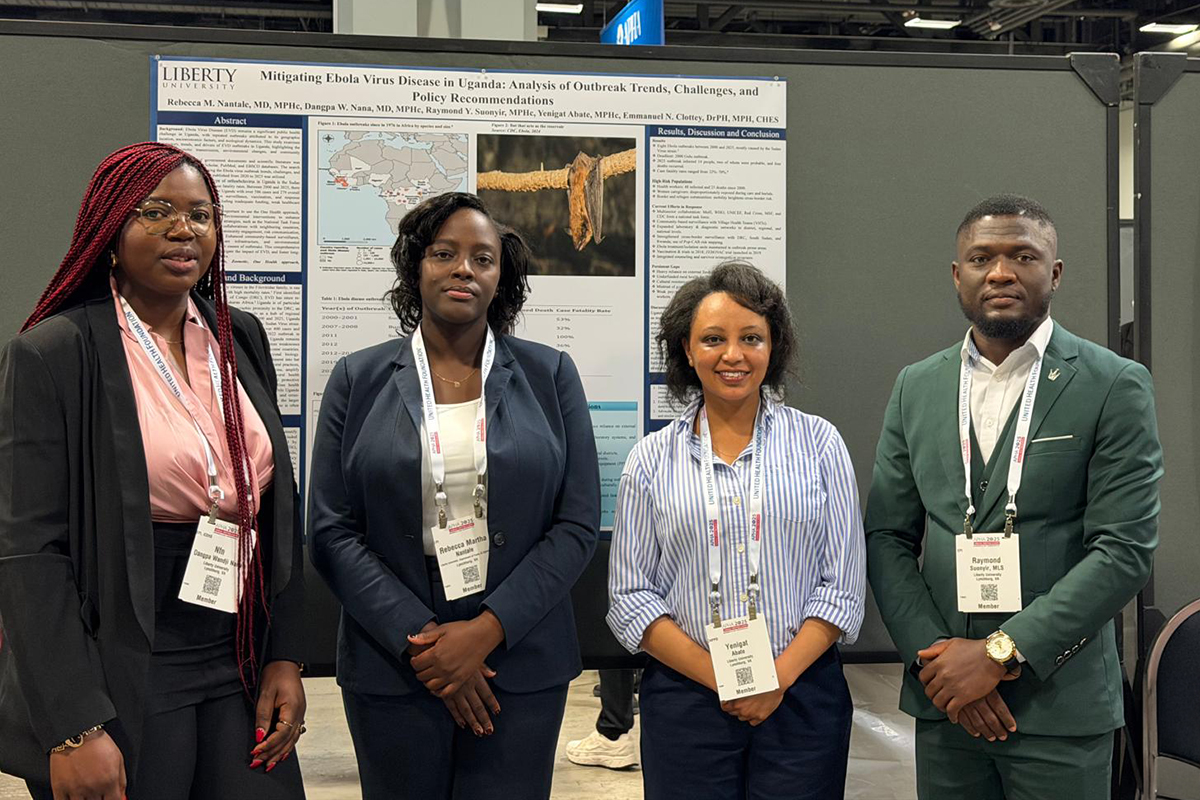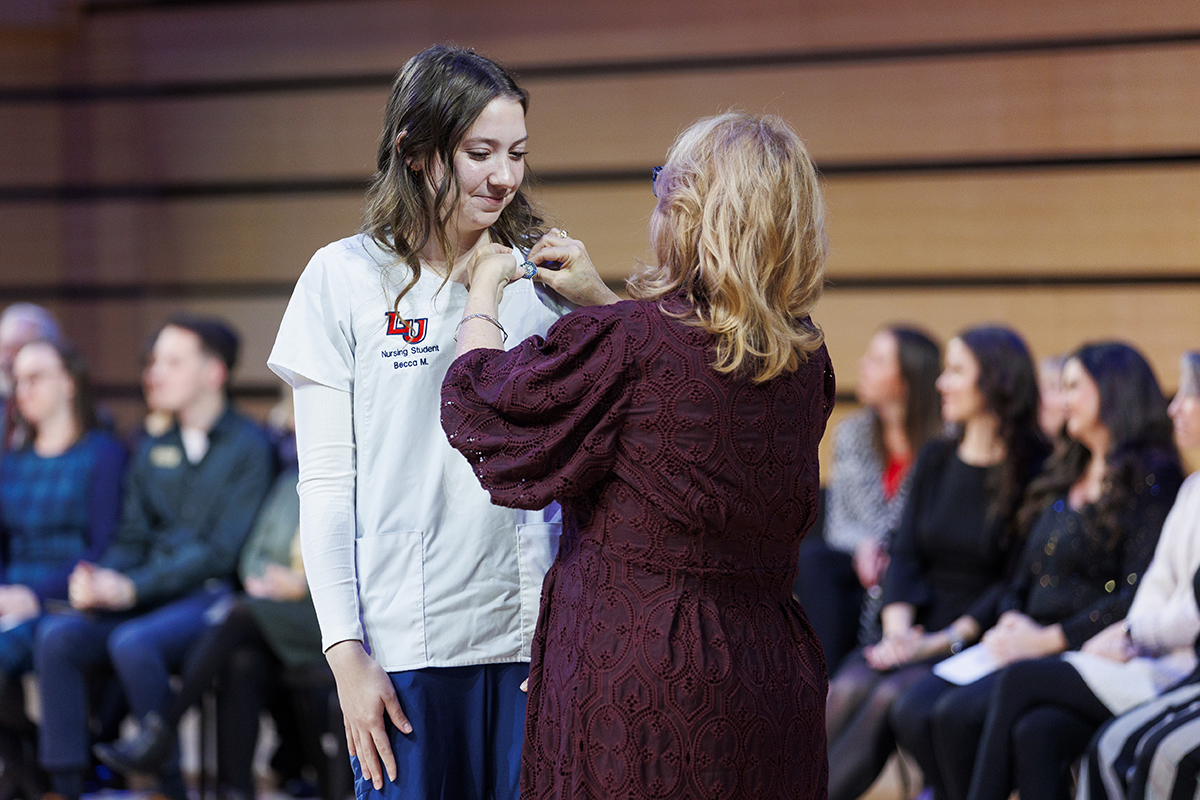Liberty students immerse locals in colonial-era history during annual New London Day festival
October 24, 2024 : By Abigail Degnan - Office of Communications & Public Engagement

Last weekend, Liberty University students celebrated the rich history of New London, a nearby community said to have been frequented by well-known historical figures such as Thomas Jefferson and Patrick Henry. Liberty owns two of the properties in the historic community — Mead’s Tavern, the oldest standing structure in Central Virginia, and the Bedford Alum Springs Hotel, once a large health resort. Students have been involved in archaeological research and restoration at the sites.
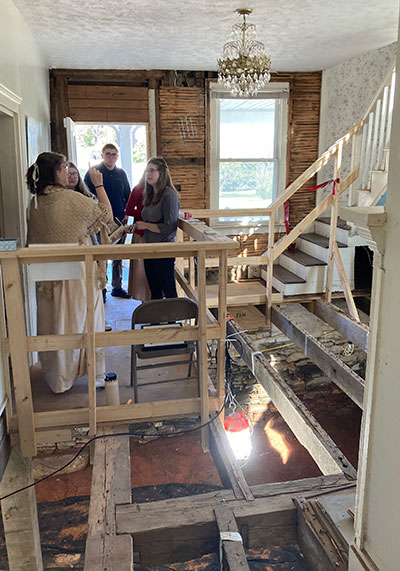
On Saturday, the history students, many dressed in period clothing, gave tours of the properties and handed out information during the annual New London Day. This is the ninth year Liberty has partnered with Friends of New London to host the event, which celebrates various aspects of the town’s history, with tours, children’s activities, reenactments, archaeology and history exhibits, a petting zoo, and more.
Many of the 25 students who participated in New London Day are part of a public history class taught by Liberty’s Director of Public History Initiatives Donna Davis Donald. The class regularly conducts research at the sites, located about 10 minutes from campus in Campbell County.
“This (event) gives my students the opportunity to have public history experience,” Donald said. “Whenever you see students doing (tours and talking about the various history of the buildings), that’s their project. They’ve been working on that all semester, and this is the culmination. Students who are working in the tavern (and hotel) this year are building on what the last few years have done. We continue to build that research.”
Mead’s Tavern, acquired by Liberty in 2015, was built in 1763 and is listed on the National Register of Historic Places. The building holds significance as a place where travelers from the north and east would stop for food and lodging on their way to the frontier.
The university is currently restoring the building with the help of architectural historians and history students. Donald is applying for grants to complete the west wing and turn it into a museum, which will be the first phase in a larger rehabilitation plan for the entire property.
Lillian Leckron, a sophomore English student with a minor in history, was dressed in period clothing at the entrance of Mead’s Tavern to explain its many uses as an 18th century tavern and later an all-girls school, The Roland Academy, from 1811-1821. More recently it was used as offices and a family home. From overhead, guests could peer into the excavation taking place in the basement and learn about early construction methods in the main living area.
“This place is full of history,” she said. “It is such a hidden treasure trove of artifacts and history. I love seeing all the layers peeled back.”
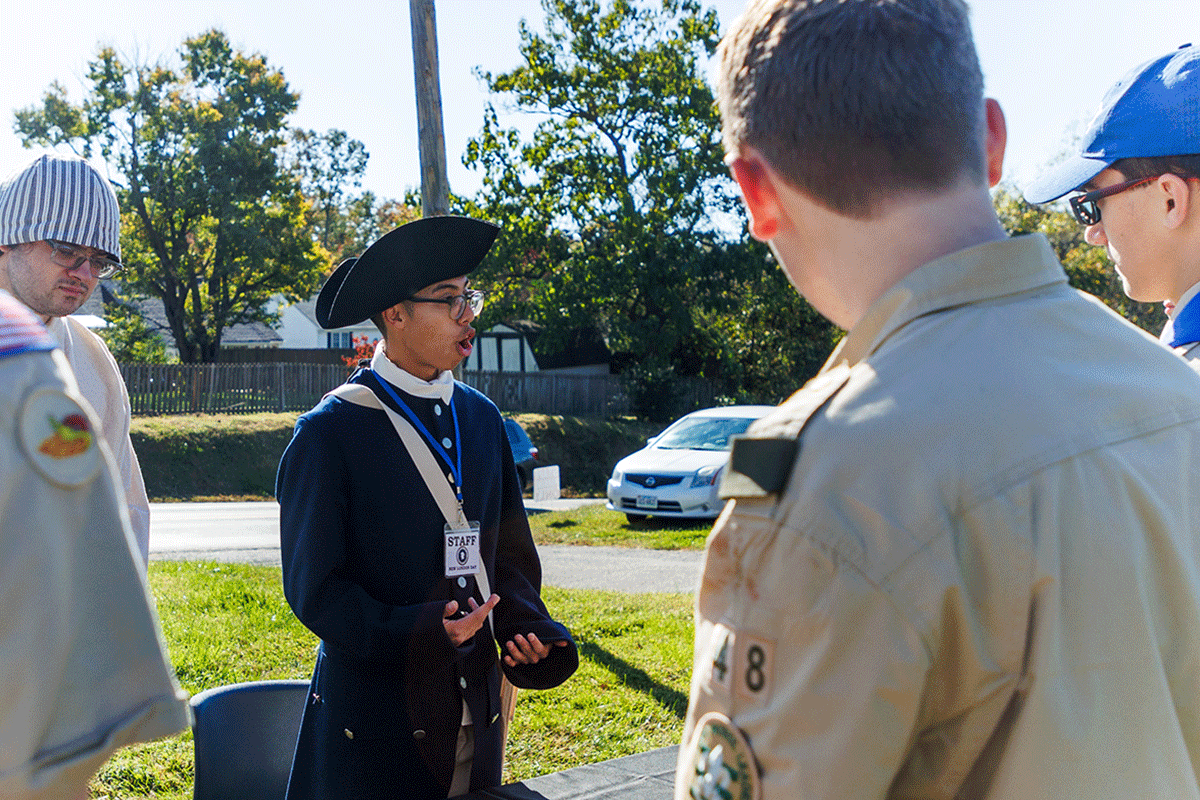
The former Bedford Alum Springs Hotel, just down the road from Mead’s Tavern, was once a resort that marketed spring water believed to have healing powers in the late 19th century. The hotel burned down and was rebuilt three times, now standing in its current state from the 1910s. A Revolutionary War arsenal was also located on the estate property, and students have been participating in archaeological excavations at the site. Donald said the students work with archaeologists and architectural historians at the properties, fostering professional networking while gaining insight from experts in the field.
As a result of the collaborative efforts, thousands of artifacts have been uncovered at both Mead’s Tavern and Bedford Alum Springs Hotel that connect local visitors with the community’s past. Among the 18th century items are coins, pipes, and musket balls, as well as domestic items such as thimbles, buttons, and ceramics, most of which are from Mead’s Tavern. They have also identified remains of buildings that lined the road, more evidence of a Continental arsenal in the town, and items such as bottles from the hotel that would have held its famous spring minerals.
Some of the student volunteers for New London Day are not pursuing history degrees, like senior interior design students Morgan Hurlbut and Lydia Bruno, who created a 3D restoration rendering of the Bedford Alum Springs Hotel. They are two of several interior design students in Donald’s class.
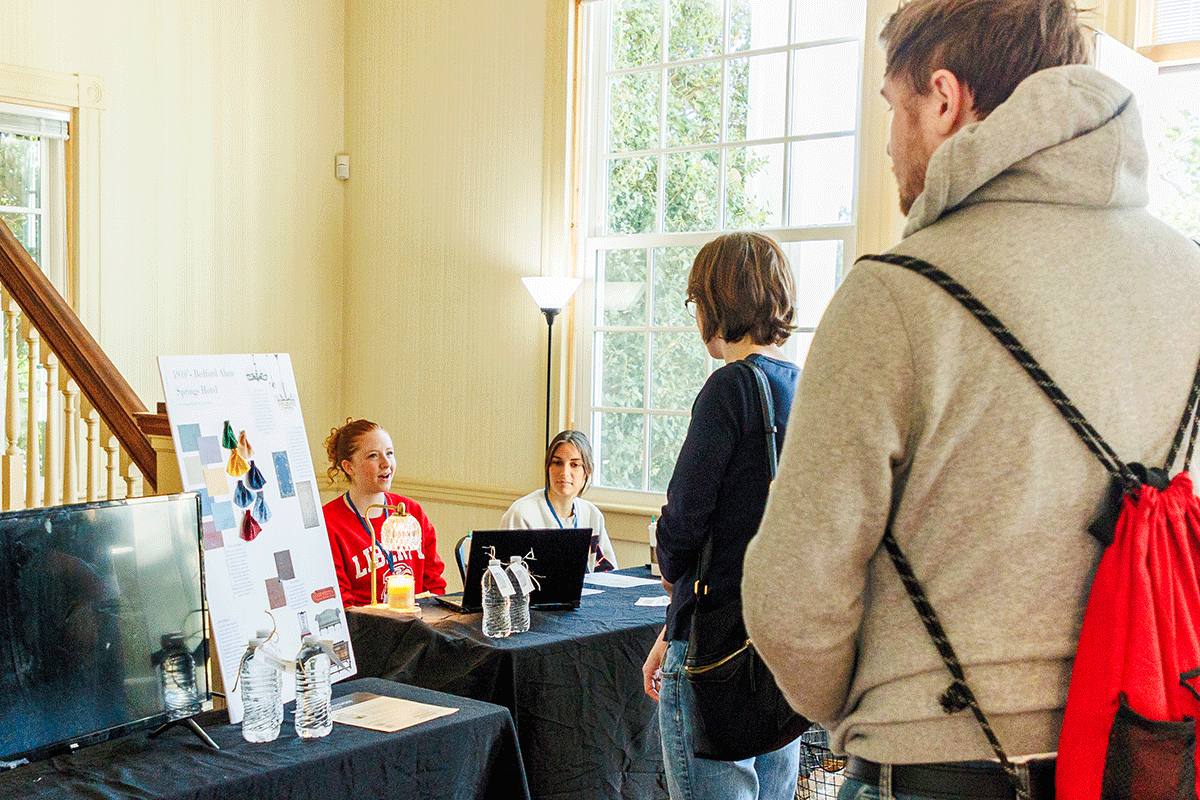
“My favorite part of New London Day was creating the 3D rendering and getting to see people watch it and enjoy what it might have looked like in the 1910s,” Hurlbut said. “Something special about the hotel is how many people have come through here over the years, and the history behind it burning down so many times and then rebuilding. It just kept coming back. We’re getting to explore that and show people.”
Donald has seen many students like Hurlbut take charge in developing new and exciting exhibits for New London Day. The exhibits may change each year based on the interests of the students and their projects.
“At the same time (they are doing their projects), they are learning to communicate with people in a way that supports the community and reflects well on Liberty, but in turn is a reflection of Jesus Christ,” Donald said.
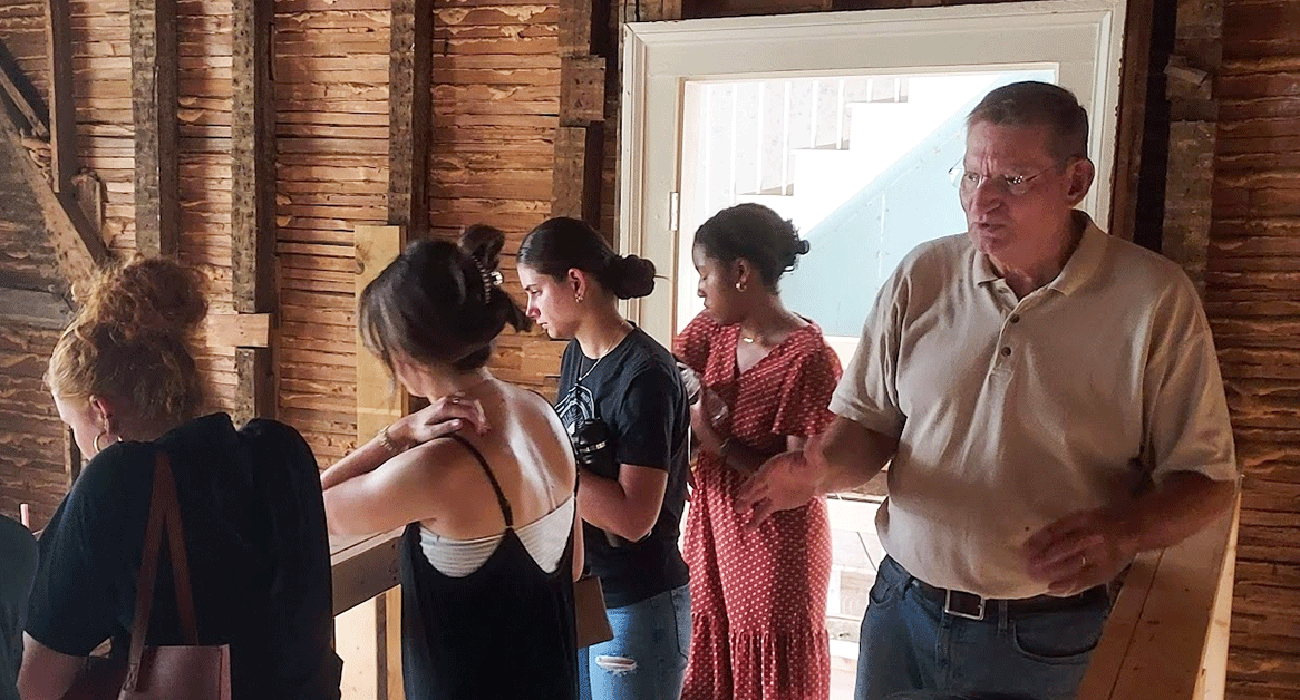
Grace Hoisington (’23) received her M.A. in History from Liberty and dedicated her thesis to studying the African American Methodist Episcopal Church, another property in New London that is owned by Friends of New London. Hoisington now works at the D-Day Memorial in nearby Bedford, Va., as a development assistant, but she returns to New London each year as a volunteer.
“New London, in general, provides kind of a workshop for students to gain public history skills,” Hoisington said. “It’s interesting seeing people learn new information about their community and the significance of a lot of these properties. That’s fulfilling, especially because of all the work that goes into making sure the research gets funded, sustained, and remembered. It takes a lot of grassroots movement.”
Hoisington sees the future of New London as becoming a historic village because of all the different sides of history it exposes, from cultural history to African American history, colonial history, and more. Donald sees a similar future in the making.
“History is everywhere, and history is nearby,” Donald said. “(Local history) is not isolated; it’s connected to other communities. This site is not just important for people who are here or have lived here. It fits into the larger history of Virginia and American history as well. It affects all of us.”
